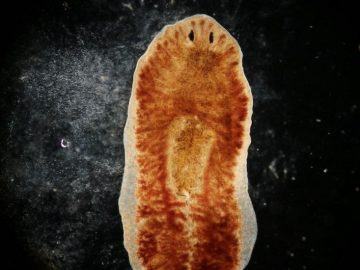Marco Altamirano in Nautilus:
 The study of memory has always been one of the stranger outposts of science. In the 1950s, an unknown psychology professor at the University of Michigan named James McConnell made headlines—and eventually became something of a celebrity—with a series of experiments on freshwater flatworms called planaria. These worms fascinated McConnell not only because they had, as he wrote, a “true synaptic type of nervous system” but also because they had “enormous powers of regeneration…under the best conditions one may cut [the worm] into as many as 50 pieces” with each section regenerating “into an intact, fully-functioning organism.”
The study of memory has always been one of the stranger outposts of science. In the 1950s, an unknown psychology professor at the University of Michigan named James McConnell made headlines—and eventually became something of a celebrity—with a series of experiments on freshwater flatworms called planaria. These worms fascinated McConnell not only because they had, as he wrote, a “true synaptic type of nervous system” but also because they had “enormous powers of regeneration…under the best conditions one may cut [the worm] into as many as 50 pieces” with each section regenerating “into an intact, fully-functioning organism.”
In an early experiment, McConnell trained the worms à la Pavlov by pairing an electric shock with flashing lights. Eventually, the worms recoiled to the light alone. Then something interesting happened when he cut the worms in half. The head of one half of the worm grew a tail and, understandably, retained the memory of its training. Surprisingly, however, the tail, which grew a head and a brain, also retained the memory of its training. If a headless worm can regrow a memory, then where is the memory stored, McConnell wondered. And, if a memory can regenerate, could he transfer it?
More here.
